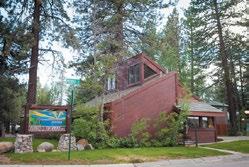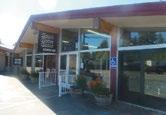This month, we answer Frances Brady's question about what is going on with the Runnels site at the Y.

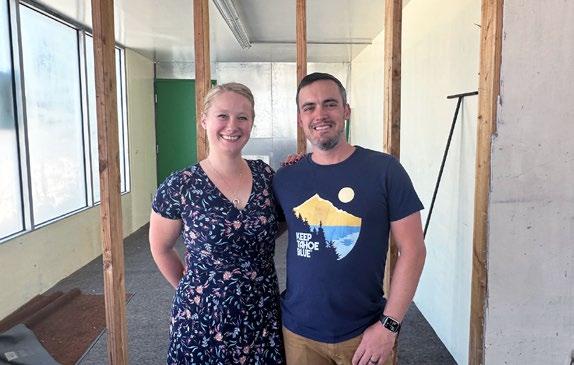
a look inside
Dave at the Movies
Indiana Jones franchise finale
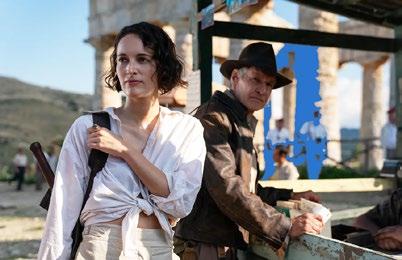
Mike's Mutterings
Numbskullery of all sorts
Keeping It Real with Peggy
You can't make this stuff up











Considering Implants?
Digital Implant treatment can bring back quality of life with more comfort and aesthetics. We utilize 3D digital technology with surgically guided implant placement that permits a minimally invasive technique that decreases bleeding and swelling without raising a gum tissue flap in most cases.


Interested? Call for our Promotional Implant Consultation including a CT Scan for $199.
Disclaimer: The promotion is limited to the consultation and CT scan only. It does not include and bone grafting or restoring the implant and does not include any other examinations, xrays cleanings, fillings, crowns or any other dental services

(530) 541-7040
#469 A antast c xer-upper oppor un y n a des rable ne ghborhood 3 bedroom 1 ba h of e s ove 1 000 squa e fee of ving space p ov d ng a g ea canvas or you dream home Er n May 530 318 2517 $425 000





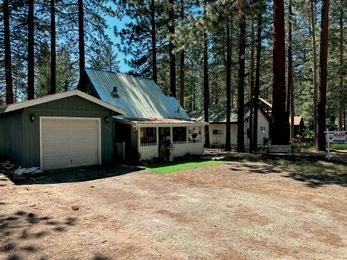


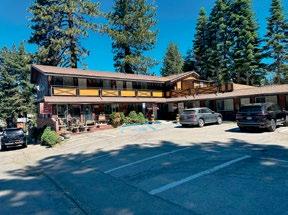




Dry needling can relieve pain, ease acute inflammation & promote healing in the body. This treatment can release or inactivate trigger points to relieve pain & improve range of motion.


Please join us on Monday, August 14 at 4:00 PM for our open house to learn more – beverages & appetizers will be served. RSVP via text or email!
$799 000
#472 Th s dup ex s we -designed layout each un t o fer ng 2 bedrooms & one bath, dea or am y or potent al en a ncome C ose o enter a nment estau an s sk resor beaches, + more Rhonda Roth





It happened gradually over more than a decade. And I was aware it was happening. But I didn’t put 2+2 — or should I say 2+5 — together until recently. I live on a short street in the county with seven homes. When we first moved here, five of those homes were occupied by full time residents and two were second homes. Now, it is the opposite. Only one other neighbor and I are full time residents, the rest being second homeowners.

I have made great friends with my nearest neighbor, who is a second homeowner. A) She is an awesome person. And B) she and her family are up here as often as possible, much more than the average second homeowner. She grew up in South Lake Tahoe and bought a second home several years ago before she would have been priced out of the market. She would love to live here full time—and I would love having her here— but the professional jobs she and her husband would need to support themselves are scarce in Tahoe. I’m not drawing any conclusions with this, just relating







my experience with regards to issues that impact our community.


Last month I wrote about Destination Stewardship, which was unveiled before the Fourth of July. As we now know, people left behind more than 8,000 pounds of trash—the most ever for the holiday—with about three-quarters of that littering Zephyr Shoals. The Forest Service showed it could move fast to address the issue. Zephyr Shoals will become a managed beach starting this fall with parking and trash oversight, signage, sanitation and staffing.
Destination Stewardship seemed like more talk and little action, but given the Forest Service’s swift response to “abuse and misuse” of one of its beaches, I am wondering if there are other actions it or other agencies involved in the effort could put in place now to mitigate overtourism impacts in Tahoe.


Last month, Tahoe Dad’s daughter Matilda wrote about organizing a Critical Mass bike event to promote



the safety and legitimacy of this alternative form of transportation. This month, Tahoe Dad writes that they received significant response and support for the ride after the column was published. The first of these monthly rides is now scheduled for August 25 from Ski Run to Lakeview Commons. That’s what I love about running the Mountain News—using our pages to create connections in the community.
Studies have shown that the fewer news outlets in a community, the lower the voter turnout and the more municipal budgets balloon. So I am happy to provide a forum for scrutiny and action in our town that makes it stronger and more informed, vibrant and connected.
Another way to connect with the community from the comfort of home is by reading a book by one of our many local authors. Check out our summer reading section in this month’s issue.
-Heather
Gary Bell

Peggy Bourland
Charles Ferris
David Hamilton
Kathryn Reed
Gloria Sinibaldi
Trish Tomer


per person. No article may be reprinted without the permission of the publisher. Send all submissions to: P.O. Box 8974, South Lake Tahoe, CA 96158. (530) 208-7671 • mountainnews2@gmail.com www.mountainnews.net
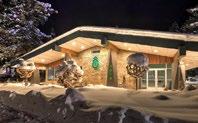



P.T. Barnum once said, “There’s no such thing as bad publicity.” This summer, Tahoe has been the poster child for bad publicity. After last year’s smack down from Fodor’s travel advisory to stay away, our area has been back in the news all over the country with alarming reports of the dumpster fire that Tahoe has become. You can’t buy this kind of national coverage and what makes it ironic is that 17 Tahoe agencies and organizations are in the middle of their “Destination Stewardship” campaign intended to send the message that they are now all about managing outdoor recreation and tourism. You can’t make this stuff up, and who would? We have become the dumping ground of tourism while the TRPA continues to rubber stamp projects that increase human density and the built environment.
Between the tons of trash left on our beaches after July 4 festivities, UNR’s scientific report that the lake contains high levels of micro-plastics and the standstill traffic and record crowds at the Celebrity Golf Tournament,
the basin is straining under the weight of more and more tourists.
The TRPA’s new executive director, Julie Regan (her background is public relations) often reports her fictionalized version of the lake’s condition. She states, “The TRPA Regional Plan measures to limit development, manage growth, and protect and restore sensitive lands have helped stabilize lake clarity.” She fails to mention that average lake clarity has plummeted by nearly 40 feet since her agency was created more than 50 years ago. Evidently some facts are not essential to Ms. Regan.
The choir of voices speaking against the TRPA’s reckless policies has increased and the volume grows louder. The message from journalists, college professors, scientists and former TRPA employees is the same: The TRPA has failed to deliver on its mandated environmental goals and instead has been captured by pro-development, pro-resort, and pro-tourism interests. Greed has consumed the basin with help from this agency.
OVERTOURISM
Some argue that Tahoe’s heavy tourism is not new. It’s true, in the early '70s when Frank Sinatra or Elvis was performing in town, the casino area was overflowing with tourists. It looked like Woodstock on the weekends. Traffic was backed up to mid-town on a Friday night, some on their way to Harvey’s Friday night seafood, creating a line that wrapped around the building.
People tend to mistakenly believe that whatever is happening right now is the worst it’s ever been—the worst snow, tourists, traffic, trash, and so on. However, some things have changed over time: tourists are no longer concentrated in the casino area,
the number of vacation rentals has tripled, moving thousands more tourists into residential areas, GPS technology directs traffic through neighborhoods (trapping people in their homes), the population in nearby cities has grown while civility and respect have declined. Bad actors (read assholes) are everywhere.
WALKING IT BACK
Those nitwits at the Nevada Department of Transportation (NDOT) appear to have come to their senses by canceling the plan to conduct a demonstration this summer that would have reduced the lanes on Hwy. 50 north of Roundhill. Nevada residents showed up en masse at the July 19 Douglas County Commissioners meeting to strongly protest, followed by the commissioners themselves who had some choice words for NDOT. The plan seems to be driven by the idea to build a dedicated/protected bike lane through this corridor. Better bike lanes are needed in Nevada, but not at the expense of an essential highway.
What's happening with the Runnels site at the Y?
– Frances BradyNevada does not have a monopoly on bad ideas. Caltrans has also reversed its half-baked idea to increase speeds on Highways 50 and 89. Between the public outrage and the delicate negotiations between the city and Caltrans, it appears that plan is dead.
In Alpine County, another ill-conceived Caltrans idea is being reconsidered. The plan was to canvas this pristine landscape with large electronic road signs. The new revised plan reduces the number of signs while Friends of Hope Valley continue to lobby for further reductions.
And who can forget the hundreds of thousands Caltrans spent on their boondoggle to solve the traffic backups at Camp Rich caused by people crossing the road to buy ice cream? The specially designed flashing light system was so confusing to drivers it made the situation worse, and the plan was quickly scrapped. Today the abandoned light fixtures stand as monuments to government incompetence.
To be continued….
With a renaissance of sorts occurring at the Y, it makes the old Runnels property stick out even more.
As this month’s question asker said, “It has great potential, but is such an eyesore.”
closed patio is also proposed for the rear of the existing structure.”
The building will be all electric, a nod to the direction California is going in its quest to ban natural gas appliances. Solar will be installed, along with a battery backup system. Fire sprinklers will be added, and fire-resistant exterior materials will be used.
Anne-Flore Dwyer of Ecosense Designs in Kirkwood is the architect. Ben Fish with Design Workshop in Stateline is the landscape architect.

“We are passionate about keeping the character of the old building because it’s an iconic structure. We are fans of midcentury architecture, which is what you see all around South Lake Tahoe,” Aster said. “But we are also bringing a new design style to the site, and with the landscaping on the corner it will be an iconic location in
The current owners, Kyle and Jessica Aster, could not agree more. On July 18 they submitted plans to the city of South Lake Tahoe and Tahoe Regional Planning Agency to redevelop the site.

“The lot is very special. We are trying to help create a place that is for locals at the Y,” Kyle Aster said. “We live close by. If you live near the Y, you understand how special it is. It’s very sunny, very exposed, with a nice, wooded lot in the back.”
The existing building will be transformed, with the mostly unusable second story planned for demolition, with the intent to leave it open-beamed inside.
The application to the planning department says the goal is to maintain “the unique character of the existing building and site. The interior space would be remodeled to include a coffee bar, informal interior seating, an area for coffee roasting, a commercial kitchen for a full-service café, and new restrooms to service interior and exterior spaces. A covered semi-en-
South Lake, which the lot deserves.”
The couple is investing an undisclosed sum of money to turn this underutilized corner into a destination that is both functional and aesthetically appealing.
In 2021, the Asters paid John Runnels $4 million for the 1.17-acre parcel at 986
Emerald Bay Road. (Runnels died last December.)
Their desire is for the adjacent open lot to accommodate small live music acts.
Planning documents say, “The project proposes to keep vehicle parking to an absolute minimum in order to design the property to be primarily accessed by foot and bike.”
It also helps that the transit center is across the street.
Aster said, “People don’t have cheap bikes anymore. They have very expensive bikes, so we should provide bike parking so people feel safe to park there.”
That’s why high-end bike storage is in the plans.
The Asters would like to break ground next spring, with buildout taking about a year. That, though, is not completely in their control. First, they need their plans to be approved and then a building permit secured.

“We will be reviewing the application for completeness. If complete, then the application will be reviewed by all relevant city departments and a staff report with recommended action on the design review will be prepared for Planning Commission consideration,” Hilary Roverud, director of development services, said.
When asked how soon the city’s Planning Commission would have the project on its agenda, Roverud said, “We will need to determine that the application is complete before I can make a prediction for you.”
Because the timeline to open is fluid, the Asters are holding off on figuring out specifics about who will be doing the coffee roasting and cooking the food.
Light lunch items—small plates, salads, snacks—are likely to be on the menu. Beer and wine will also be served, in addition to various coffee beverages.
Down the road the Asters envision food trucks to set up shop out front where there will be covered and uncovered seating.
”Try That in a Small Town” by Jason Aldean meant something to me and brought back my small-town memories.
I grew up in two little mining towns, Mariposa near Yosemite for a few years and then Sonora from 4th grade through my second year of college. Mariposa was like Mayberry from the Andy Griffith show and Sonora wasn’t much bigger. The County fair and big parade and rodeo were the big events. Our neighboring county had the Angels Camp frog jump event at their fair just like in the Tom Sawyer books. They had maybe 2,000 people in that whole county, but many more thousands came to watch those
frogs jump and to eat county fair corn dogs and homemade pies.
One year (I think it was about 1968), several biker gangs from Stockton and the Bay Area rode into that community and instantly overwhelmed the few sheriff deputies. There were dozens of them riding their motorcycles into the bars and stores, cruising the streets drunk and high, harassing young girls and families and beating up anyone who stood in their way. The hospital filled up quickly. It was just like the old Marlon Brando biker movies. My father got a call as did many other men in Sonora. They jumped up and drove to Angel's Camp. I was too young at
The Asters, who are both in their 30s, have lived in South Lake Tahoe full time since 2016. They are retired in the sense that they no longer need to work for anyone else. This is their first foray into commercial development.
The Asters hope that after nearly 50 years of being known as the Runnels site, this corner at the Y will come to be seen in a positive light and that Aster Station will contribute to making South Lake Tahoe a place locals can be proud of.

GOT A QUESTION?
Email: mountainnews2@gmail.com Mail: P.O. Box 8974, South Lake Tahoe, CA 95618.
14, though I tried my best to get him to let me go. Those men went over there and straightened things out kicking those gangs out of town and holding some for the sheriffs who showed up from Stockton to help. I did not for one minute think of race or gender when I heard that song. I just thought of my dad helping to save our neighbors. Those who were raised in small towns too know the true meaning well because we lived it.

In the septic tank of problems in the Tahoe Basin, the housing issue has risen to the top. Started by increasing tourism, kindled by Covid and fueled by Vacation Home Rentals, AirB&B etc, low income housing has dwindled. Some of the workforce had to relocate out of the basin. TRPA’s strict building rules have stunted building new units. On the flip side, they have increased the number of mega mansion developments like Incline’s Lake Shore Blvd. TRPA, the city of South Lake Tahoe and Placer County all have their own solution. Cascade consulting firm proposed to TRPA to increase height, decrease setbacks and reduce parking in order to squeeze 12 onebedroom units on 12,000 sq ft! The rent for this scenario comes at the lowest end to $2300/month! Assuming an annual income of $105,000, hardly low income. They also did not provide the acquisition price of land, nor did they know average income in the communities, $29,000 in SLT.
Why would they permit the Latitude 39 development, luxury high end condos by an LA developer to be built in Stateline, average income $23,000! Or the 947 project in Incline Village, average income $65,000 owned by the same guy that owns Round Hill, at $2.5 million per unit? Even the mathematically challenged on their boards can figure out that none of the locals can afford any of this. It will draw more out-of-area, wealthy second-homeowners.


The city of SLT has the “unique” Californian approach of increasing taxes on second homes. This alerted the state government and they didn’t want to miss out and created a VHR tax of ten percent. That and the prospect to pay ten percent property sales tax to the state has some VHR owners considering exiting this market.

None of these entities study the California Environmental Quality Act—CEQA—impact on Tahoe.

As a fact, Placer County deemed the new road project in Kings Beach exempt and the senior planner at TRPA stated that they did not consider CEQA in their decisions! Why does this matter? Fire evacuation routes impact as well as esthetics are mandated by CEQA! As long as the multiple four letter entities around the lake are listening to their “stake holders” in the resort and hospitality communities and ignoring the residents’ needs, change will not be possible. The statement at a (recent) TRPA Governing Board is correct: they have a communication problem! Rather than listening to the community, they make their decisions and then try to sell them to us afterwards.
NYPD Detective Dan Crane is looking forward to just one thing: retiring in Nevada to be closer to his only brother. When Jay, a radar scientist employed by a major defense contractor, is murdered in his secure laboratory compound, Dan will cross the country, shredding the Department’s policy that stops a cop from working a case WHEN IT’S PERSONAL.
“WHEN IT’S PERSONAL is a first-rate thriller, masterfully woven with an insider’s knowledge of police procedure and resourceful detective work. Robert Max keeps you riveted once again, from the very first page to the last.”

—Terry Daniels, Chief of Police (Ret.), South Lake Tahoe, CA
“I had to wait 3 years for this book to come out, and it was worth the wait! It has everything Crime/Thriller readers could wish for: including car chases, exciting story line, wonderful characters, high body count and even a little romance to even things out. This book is one of those ‘couldn’t put it down’ reads, so don’t miss it.”
—Mary Ann H. South Lake
CA
Meghan Hays is the new presidential appointee to the Tahoe Regional Planning Agency Governing Board. Hays grew up vacationing at her family’s seasonal home in Homewood. Hays is a communications executive who worked for President Joe Biden as vice-president, candidate and president. She replaces A.J. “Bud” Hicks who was honored for his exceptional leadership in forest resilience.
Spending time outdoors can increase mental and physical well being. Barton Health is sponsoring a stroll around the Upper Truckee Loop on August 21 at 10am led by a wellness advocate. For more information, visit bartonhealth.org/wellnessoutings.





Barton Pediatrics is hosting two vaccination clinics on August 22 and August 25, 8am to 4:30pm for kindergarten and seventh grade students. For more information, call 530/543-5550.
Sarah Trickey, a nurse in the Barton emergency room, was recognized with the DAISY award for outstanding nurses. She was nominated by a patient who noted Trickey helped her stay positive, attended to her needs, had a good sense of humor and was attentive to the patient’s partner.

The Tahoe Art League will host plein air painting workshops in Faith Valley, August 16-19. The workshops are for all types and levels of artists wanting to explore and enjoy working outside of a studio or home, with the Sierra’s natural light. Attendance is free. To sign up, contact Jill Miller-Allert: (530) 318-8700 or QuailRunArt@ gmail.com.
August 21 to August 25, kids 5 years old to 9 years old can participate in a mixed media art class focused on food—cardboard donuts, clay cakes and more! Attendees will be split into small groups, each with a facilitator, to unleash their creativity. To register, visit https://ltcc.asapconnected.com.
The Tahoe Rim Trail Association has developed a half-mile hike at VanSickle Bi-State Park featuring informational signs in English, Spanish and the Washoe language retelling the Washoe legend of how they got fire. The association purposely chose a short, easy walk to set up the exhibit so it would be accessible to more people. “I think it’s really insightful just for the general public to know who was here before us and why we should really respect this land,” said Julia Kaseta, youth program director.
Lake Tahoe Community College Trustee Kerry David was recently honored for 30 years of service on the LTCC board. “For more than 30 years, Kerry has helped countless people through his efforts to better our community—he is a generous, wise and caring man who deserves, yet has never sought, acknowledgement for all his endeavors,” stated board president Tony Sears.
Macavoy Layne who channeled Mark Twain for three decades, gave his final performance as the storied author on July 21 at Lake of the Sky Amphitheater.
“It’s the end of an era,” said local Forest Service Public Services Staff Officer Daniel Cressy.
Learn all about these creatures of the night—bats—at the Lake of the Sky Amphitheater on August 18 at 7:30pm.
The UC Davis Tahoe Environmental Research Center has released its annual State of the Lake report. The report details changes in lake clarity and the possible links to a sudden decline in the Mysis shrimp population.
Extensive algal blooms in the nearshore of the lake and new data on microplastics are also detailed. Other topics include new monitor-

ing and modeling efforts, lowered nitrogen and phosphorus levels and research into the efficacy of no-wake zones. To read the full report, visit https://tahoe.ucdavis. edu/stateofthelake.
The Tahoe Conservancy recently awarded $4.6 million to various agencies to support forest resilience. $3.3 million was awarded to Lake Valley Fire and South Lake Tahoe Fire Rescue for projects that reduce wildfire risk in their jurisdiction. The Tahoe Resource Conservation District received $1.3 million to study and prepare forest resilience projects.
The Tahoe Fund will match all donations up to $50,000 to help restore 19 miles of trail in Desolation Wilderness from Echo Lakes to Lake Aloha. “This beloved section of trail takes you to gorgeous alpine lakes and through pristine wilderness,” said Deb Howard, Tahoe Fund board member.
“We’re calling on our community to help fund this restoration work to give all trail users a safer, more enjoyable experience, while also reducing the impact on Tahoe’s sensitive alpine environment.”
For more information or to donate, visit www.tahoefund.org/ desolation.
The new Tahoe Blue Event Center will be home to an East Coast Hockey League professional hockey expansion team. The team has yet to be named.
The 6th Annual Tahoe Brewfest to benefit the Boys & Girls Club will be held on August 26 on Ski Run Blvd. More than 40 breweries and 20 food vendors will participate. There will also be music, games and more. Tickets available at www.tahoebrewfest. com.
The South Lake Tahoe Library is hosting a workshop on August 22 at 5:30pm about how to have more meaningful experiences in the outdoors through poetry, prose and photography. Geared for adults, but all ages are welcome.
South Lake Tahoe Mayor Cristi Creegan will be hosting a community hike and ice cream social on August 24. The walk will highlight bike trails and future projects. Meet at Champions Plaza at 5:30pm for the one-mile round trip walk. Have a community announcement? Email mountainnews2@gmail.com, subject line “Heard.”
Mountain Living Numbskullery

You wood-burners (current or former) will appreciate this most. I found myself the other day tossing firewood piece-by-piece from a second-story deck down into the yard in anticipation of working on said deck. Keep in mind, this wood got to that deck load-by-load up the stairs, and in order to be burned, will eventually have to be carried back up, load-by-load, again.
Wood burners like to quip that they move each piece of wood at least four times—into the truck, then to the chopping block, then to the woodpile, then to the stove; I’m pretty sure I’ve got them beat—I mean, if this is some kind of competition among numbskulls.
Other kinds of numbskullery:


aka, a local’s (attempted) beach outing
We had a niece and nephew visiting and decided, hey, why not let them have their first kayak experience here in Lake Tahoe? They were into the idea, so we loaded up, as you do—coolers, tubes, chairs, of course kayaks, and one of those float noodles that serve as the best Canada goose deterrent (maybe it’s the yellow especially? And it beats getting into a physical confrontation with a goose, which you will lose).
We had even planned an early arrival to Baldwin (10am) since—you know—summer. So, imagine my surprise (and I’m now guessing, your surprise at my surprise) when we ran into stopped traffic at Jalapenos. How could this be? I mean, it wasn’t the Fourth of July or anything. We figured 10 am was early enough . but we were clearly wrong.
You’ve heard all the uproar over raising speed limits summer? Well, I can tell you that wasn’t the problem here, at least.

Quiz time for you locals: What was plan B?



Yes, we hung a turn up 13th Street to attempt what it turned out nearly half the other numbskulls were trying next—of course, to go back out LT Blvd to Tahoe Mtn and over to try Fallen Leaf—or maybe, if we were just dumb enough, Angora. Plans B and C on the fly.
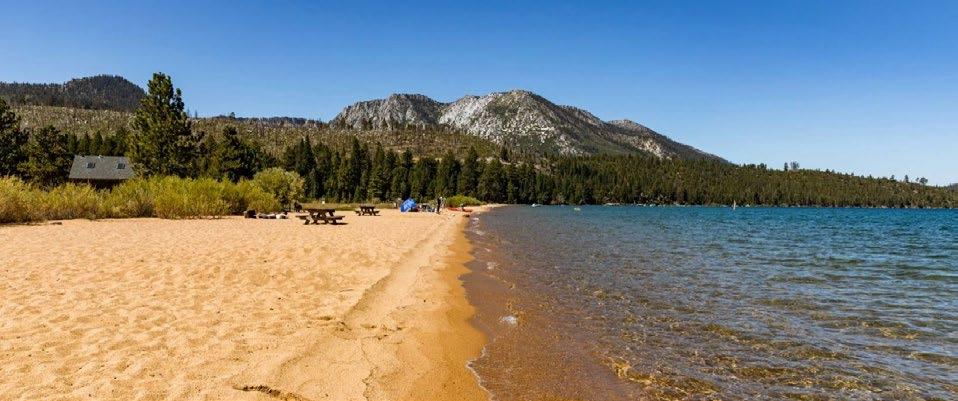
I’d like to tell you we were the only car snaking down to Fallen Leaf Road to get to the campground and thus the lake parking area . . and that Fallen Leaf Road was delightfully free flowing. Suffice it to say, when we spied the clogged Fallen Leaf Road, we made a three-point turn before even reaching it and headed back up toward NUT, and no—I wasn’t about to attempt Angora on a day like this.
So, now picture you’re going against traffic back up that road, which is mostly a car-and-ahalf wide, until you come to that single-car funnel point near the top before it enters the Tahoe Mountain neighborhood. All traffic is streaming down and you’re waiting for someone to stop to let you through the other way just to escape the madness.
I’d like to tell you someone considerately stopped to let us and a couple other cars up. Instead, Anne got out and started to go up there to stop the downhill traffic. They saw her and weighed their options and I guess decided she either looked nice enough or mean enough, so they stopped and let us through.
Ok, another quiz for you locals: where do you suppose we tried for plan C? (or maybe D by this time?). Or I should say, where would Meyers folks try next? You got it—the river. After all, we spent many an adventure day there when the kids were little—beach spots here and there and water to play in. Well, I’m sure you’re already telling me what we were going to run into—a much wider river than usual, none of the usual beaches, and yeah, much colder than the lake.
Plan D/E? You’ve probably been yelling this since we were stuck at Jalapenos: just go home and try the lake again before the golden hour tonight, when the tourists have left. That’s when we usually go anyway, so I don’t know what we were thinking in the first place.

This could just be nostalgia talking, but it seems there was a time not too many years ago when it wasn’t this bad, right?
But the beach did clear out that evening and yes, it was golden.
A quick travel reflection




Not something we’ve done before, but we saved up for a while and finally got to go to Ireland for a milestone anniversary trip. I’ll share just a couple insights.
Being the tourist, and in this case doing the whole “wrong side of the road” thing as well, highlighted the need for me to be more patient with our visitors. Sure, some are rude or disrespect the environment, but most people are probably trying to do their best. I think?
A greater appreciation for space—personal and otherwise. I know it’s crowded and packed when you’re walking in SF or other big cities, but mostly in the U.S., we have space to move . . and to park a car. Just the fact that restaurants, cafes and shops usually have parking here, we take for granted.
But most of all, after being in a place where salt is the only “spice,” I need to celebrate our easy access to foods with kick . and flavor.

Parting thought . . .
It’s never a good sign when you hear loud laughter from the VHR across the way and then the song “Tequila” starts in on replay.
As always . . feel free to email MikesMutterings@gmail.com

Close
BOGO SALE




When It’s Personal is a rocket ride from start to finish. Its author, Robert Max, who started out in New York City and ended up in Tahoe, ramps the story up at the start and doesn’t stop.

A New York City detective, Dan Crane, with family out in California, ends up in California and Nevada on his own, with nothing but his extensive law enforcement experience for back up.
He’s on the trail of some very bad actors who’ve attacked him, his brother and his brother’s family, and a mystery surrounding his brother's work in Ormsby, Nevada. Sounds simple. It’s not.

Best thing to do when starting this book is to get your snacks lined up, coffee pot full, and calendar cleared. Then, strap in. It’s an intense ride all the way through.
Anyone who lives around here or visits frequently will quickly understand
Max’s familiarity with Tahoe, in and out of the Basin. The story revolves around familiar places, street names, highways and communities, with a side trip to San Jose.
Detective Dan Crane, NYC Homicide Unit, is introduced while working a case in his city. His new partner is getting a first-hand lesson in what “The Job,” as Crane calls working in law enforcement, means. Long hours, unpredictability and high intensity are the start.
Crane, at home after an intense day on a case, answers a knock at his door. He’s confronted by two men who seem to be FBI. It’s downhill from there once they are in his apartment. Crane is attacked, his apartment is blown up, and he wakes up with his new partner standing over him, calling his name.
It doesn’t stop at that. Picking their way to the street through the rubble of his apartment, they’re shot at, and a bit of a chase takes place.
The story picks up speed after Crane is notified the secure facility in Ormsby where his scientist broth-
er works was destroyed by an explosion and fire, with his brother in it. His brother’s wife and young children are at risk, and Crane kicks into action, heading to Ormsby and Tahoe.
In Ormsby and Tahoe, Crane is 2,700 miles out of his legal jurisdiction. Stay buckled up because that just doesn’t matter. A jumble of local, state and federal agencies, the alphabet soup of three-letter federals, are all included in what fills the rest of the book.
The end of the story left me with the distinct feeling that the last scene is the lead into another wild ride in Tahoe with Dan Crane.
It’s well worth the time to enjoy this book, not only for the intriguing plot but for the journey through familiar locales that add to the ride.
2 LOCATIONS!
987 EDGEWOOD CIRCLE (DOMINOS PIZZA CENTER)
530-544-6666
WWW.TAHOECBD.COM



Stab it. Strangle it. Rip out its guts. Throw it off a cliff. The foregoing is a knitting expression, designed to remind and guide knitters how to proceed. It is also
knew? (Though a knitting needle can make a lethal weapon when wielded properly.)

The book starts out in San Francisco, when Inspector May Ling Chan is roused from the comfort of her bed to attend to the killing of Mary Ellen Morrison, an elderly woman who was gratuitously tortured and murdered in her home — a seanmhair (Scots for grandmother) and, surprise, a knitter.
Her bereaved grandson, Sean, finds almost nothing missing in her home, so the murder is put down to a sadistic psychopath or someone who prolonged her agony to gain information. But what information? Sean cannot think of anything his Seanmhair might know that would be of value.
Shortly thereafter, a bookstore owner in Oakland turns up dead, tortured in the same way. The bookstore specializes in antique documents and volumes and given the similarity in crimes, Inspector Chan wonders if there’s a connection.
seanmhair and her granddaughter at what else — a knitting booth. Suspicious characters lurk in the background and shortly thereafter, the grandmother is murdered and the granddaughter goes missing.
Inspector Chan, noting all the similarities and coincidences, advises Sean and Kay to get out of town, so they hightail it for Jamaica, where Sean has heard he has distant relatives.
In Jamaica, the pair meet Pistachio, in a raunchy introduction, who turns out to be one of Sean’s long lost family members, and his mother, Agwe, who owns, guess what — a knitting store.


cused on deciphering words, understanding is hindered (at least in my case) and requires re-reading.
Writers make choices and present their stories in various ways and readers can be expected to do a little work in understanding as well. A better approach might have been to render the dialogue in standard English, with a word or phrase in the local patois thrown in for color.
the


the plot. Knitting and murder — who
To distract themselves, Sean and his girlfriend, Kay Wu, a knitter who thrived under the tutelage of Mary Ellen, attend a community fair where they meet another
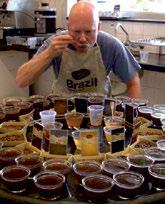
It was at this point that the book began to become laborious. Edwards made the choice to render the dialogue in the phonetic island dialect. Sounding out the words, trying to convert it word by word and line by line into standard English slowed things down quite a bit. Edwards does the same thing with the Scots dialect when the pair travel to Scotland along with Pistachio, so sometimes the reader is deciphering back and forth between two dialects that are often considered almost foreign languages already. When one is fo-
I did make it through to the end — though it took longer than anticipated — and the heroes, or should I say heroines, include a Voodoo priestess and a Druid wise woman who summon the supernatural in addition to the human gumshoes, and the book does contain some insight into those practices.
Knitting in Jamaica is the first in what is forecast to be a series. I hope to have time to more fully decipher and understand Edward’s next in the series, Knitting Man, which takes place at Burning Man.
Oh — and the sweater on the cover of Edward’s book is a picture of an actual sweater knitted by his wife. Touché.

Todd Borg’s Tahoe Flight lands on bookshelves this summer, and what a wild ride! This latest episode in Owen McKenna’s mystery series features of course Detective Owen McKenna, and his Great Dane Spot, as well as other familiar characters such as Street Casey and Sergeant Diamond.
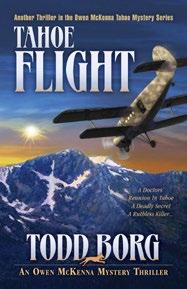
Camille, a nine-year-old child adopted by Street and introduced in Borg’s last novel, is woven into this story as well. Tahoe Flight will send you into a whirlwind of intrigue, dotted with a host of kooky characters and hair-on-fire adventures not meant for the faint-of-heart. Borg’s novel, number 21, does not lack substance or detail. There are provocative topics, as is typical in Borg’s books, and no shortage of action or angst with a nod to Wuthering Heights.
Tahoe Flight begins at a physicians’ convention in Tahoe City. Here we meet characters that are highly educated but burdened with ghosts from their pasts. The
triplets, known as the Bronte Sisters, are internists as well as witty extroverts with a lot to say. And maybe to conceal? They
finish each other’s sentences in sort of an annoying way. Veronica Eastern, a fellow doctor of psychology, drops dead at this gathering. It’s subtle and sudden. Everyone is perplexed. And there is Dr. Benito Diaz who is being hunted by an ex-con out to settle a score. It turns out McKenna is also the target of this murderous maniac. Let’s not forget Heathcliff, a medical school dropout who has an imaginary girlfriend with whom he enjoys his daily coffee. These folks and others punctuate the plot with their compelling personas and quirks. To say there are many tentacles to this tale is an understatement. It might be a challenge to keep score.
Do you like airplanes? Well, the airplane in Tahoe Flight is not just any airplane. It’s an AN-2 biplane. There’s much to know about this unique flying machine —where it can land and how to bring it down, its idle, thrust, stall speed and more. A ghillie suit is a term I was not familiar with, but now know. Most of the plot is set
in and around Incline Village, some on the South Shore and of course, Tahoe City. The Flume Trail is featured and we get a good view of Mt. Tallac, in an alarming way.
The finale reveals a bone-chilling set of events and a perilous scene that set me on edge. The realism is of course questionable. Could it really happen this way? Probably not, but it doesn’t stop the reader from being immersed in heart-stopping moments that frazzle the nerves. Maybe it is because Spot is at the center of the chaos. His sad eyes pulled at my heart strings. It seems McKenna and his poor pooch can’t possibly survive this predicament, right?
Tahoe Flight is an entertaining read that will whisk you away to the world of doctors, smugglers, pilots and peril. Even art is touched upon. It will tease you into thinking about what is justified morally and what is important in relationships and life. No doubt it will keep you guessing what comes next. Check it out!
We’ve all been taught not to judge a book by its cover. While this is usually a metaphorical phrase, for me it’s literal.
After taking one look at the cover and title, I decided I was going to have a hard time getting through the book. I was half correct. The first half of God’s Itinerary (Page Publishing, 2023) by Dixie Marlene Williams was a bit of a struggle, while the second half left me wanting more.
In 2009, Williams was in South Lake Tahoe when she had a vision that led her on a spiritual journey that took her to Ireland, England, India and Egypt, with the latter two countries consuming the bulk of the book.
To explain my reaction to the book cover—considering Williams mostly writes about this being a spiritual journey, has unflattering things to say about religion, uses the word God less than other euphemisms for a holy spirit—the word God in the title seems a bit misplaced.
I will not question who or what she
was guided by. We all have an inner voice that sometimes we listen to, other times ignore. Who or what the voice is, well, that’s for the individual to decide.
Simply put, I believe this book would appeal to more people if God were not in the title.
While the cover photo is of a rainbow over a pyramid in Egypt—a photo Williams took—it isn’t bold enough to convey what’s inside. This all matters because if the cover doesn’t grab a reader, well, it’s just going to sit on the bookshelf.

For another cliché—it’s what’s inside that matters—well, then Williams scores more points with me on this aspect than the outside of her book.
Williams’ words reminded me why I have so enjoyed solo travel. You experience things and interact with people in ways that don’t occur when you are with someone else. You meet more people, share experiences and don’t have to compromise on where you go or when. Those
aspects of her travels resonated with me. Her journey was not always easy. She clearly didn’t enjoy every experience. But I like that she persevered, following her spiritual quest, but seemed to be always experiencing it with a critical eye and not blindly.
It was Williams’ travels in Egypt that most interested me. Perhaps it’s because this is a part of the world I would like to experience. Perhaps because the book became mostly travel and less about her search for something.
However, the book is missing a chapter to summarize what this whole experience meant to her, whether it was worth it, whether she is still on a spiritual journey.
Then, again, the book has no chapters. It starts off with dates as subheads, so to speak, then those disappear. It is one long narrative, albeit with some photos, that would be better sectioned off if only to make it easier on the reader.
Life is supposed to be an adventure, not lived in a cubicle counting the days and dollars until retirement. At least that is the philosophy of Poupine Thomas.
Thomas takes readers on a journey of her life that embraces her philosophy in her 2020 indie published book, Living Free: A Rebel’s Daring Journey of Discovery.

Part of the French native’s impetus to write the book was to explain how she traveled for about 40 years without paying taxes in any country, how she maneuvered without a passport or appropriate visas, and how the goodness of strangers helped to keep her going.
Thomas made money in various jobs—including a lot of waitressing before she started making more money selling jewelry, then photos, and finally mobiles.
She spent a good chunk of time in the Lake Tahoe Basin, with four of the 20 chapters devoted to the region. She men-
tions ski resorts we all know and even some people. Thomas calls Randy Mundt, who for years ran the Tahoe Flea Market on the South Shore, her “text man and content editor and the main supporter of this venture.”
More than once Thomas says this is not a travel book. And it’s not, even though her escapades take her back and forth across the United States, into Canada, South America, Europe, New Zealand and Australia. Had this been a travel book, it would inevitably be much longer than 169 pages, and it cer-
tainly would have a completely different flavor.
What makes this book interesting is that it’s like reading someone’s journal instead of a refined memoir. I’ve read passages from authors’ journals, but not a whole book that read like one. Some journals are superficial, while others are introspective, and others are like short stories with each entry.
This approach of Thomas’ is also what makes the book disappointing because it’s shallow. In the preface she admits she is
not a writer, but that isn’t the problem— it’s the lack of substance.
Randomly she inserts what I’d call essays on subjects that are important to her, such as recycling, snobbery in the arts, and gender issues. I found these passages the most interesting—probably because they had some depth.
What bothered me the most, though, is she included at least one image that she didn’t have permission to use. I know because I reached out to the photographer. It appears to be an image from a publication, with the publication not identified, only the photographer. For this copyright violation, I cannot in any terms recommend this book.
The Morality of Deceit by Tahoe water engineer and consultant Craig William Morgan has a pleasing heft both literally and in its subject matter. The 482-page tale (another 56 pages are devoted to a bibliography, index and other references) chronicles the battle over water from the Colorado River, especially with respect to farmers in California’s Imperial Valley in the early 2000s.

I’ll skip the famous Mark Twain “whiskey and water quote,” and say the book presents a Venn diagram of separate and overlapping interests of various communities, municipalities, environmentalists, farmers, immigrants, Native American tribes, states and nations, overlaid by politics and legal principles.
The book begins with the 2003 signing of something called the Quantification Settlement Agreement. It bound the state of California to live within its annual allocation of 4.4 million acre feet of water (one acre-foot of water will supply about two average households annually) from the Colorado River and divided that allocation among the Imperial Irrigation District, the Coachella Valley Water District, the Metropolitan Water District of Southern California and the San Diego County Water


Authority. Almost immediately the QSA was challenged in court and it would take more than a decade until all the issues were settled.
From his home in Tahoe, Morgan entered the fray about a month after the QSA was signed when he called his old college buddy from Colorado State University, Mike Abatti, an Imperial Valley farmer. The QSA would transfer about 500,000 acre feet of water from the Imperial Irrigation District to the other three water entities with serious impacts to the agricultural communities and environment of Imperial County which had come to rely on that water. Incongruously, the Imperial Irrigation District appeared to be more interested in providing water to its urban neighbors than preserving it for its main constituents.
Morgan soon signed on as a consultant to the farmers and the book is his view from
within. (At one point, he even goes swimming in an irrigation canal as research!)
The book covers election turnovers, strange bedfellows, court hearings and appeals, economic considerations, concerns about human life (covered by the TV newsmagazine 60 Minutes), damage to the environment, and other twists and turns as the issues moved toward resolution, for the time being at least, in 2015.
The book takes a while to get going as Morgan sets the stage and introduces the various players. It takes about 100 pages for the narrative to really start flowing. Morgan writes in elegant, carefully wrought sentences that convey much, but at times I wished for more bitesized pieces. Political cartoons Abatti and company placed in the local newspaper and reprinted here and a take on ՚Twas the Night Before Christmas, reworked to re-
flect the matters involved, help quite a bit to truly convey what was going on in laymen’s terms.
The Morality of Deceit would also have benefitted from fuller development of the various people, or characters, involved. Who are they as people? Morgan does an adequate job of sketching out the various personalities, but some more color and depth would have added to a fuller understanding of what was driving the plot.
In many ways, reading this book reminded me of my experiences as a young reporter, an experience shared by other journalists I have talked to, of coming to a community with its own unique issues. You are assigned to cover this or that and have to figure out what is going on, what is really being said and debated underneath all the technical jargon and bureaucratese. But once you do figure out what is going on, the dry pronouncements and discussions change like the turning of a kaleidoscope and become a soap opera of suspense, shocking revelations and reversals of fortune. Though it takes a bit to get there, on those counts, Morgan does not disappoint.
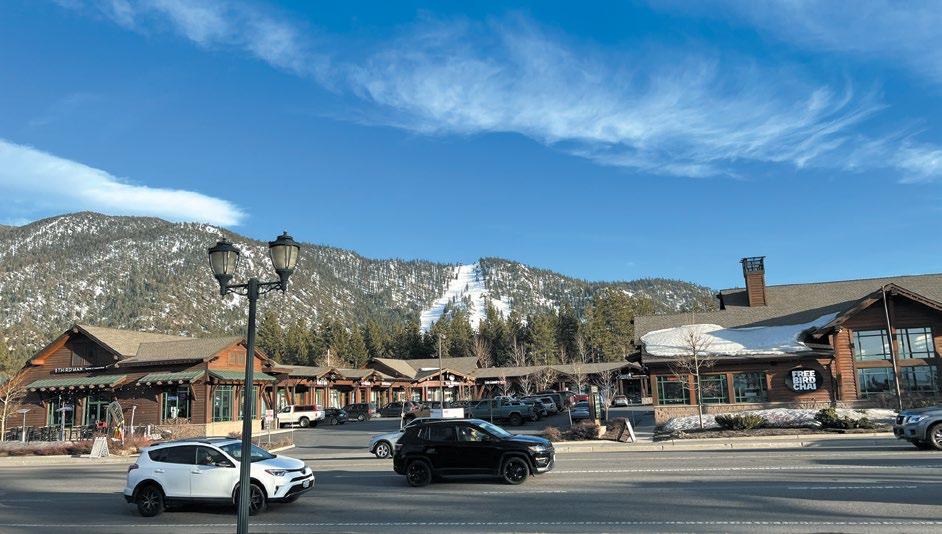























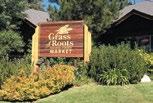




























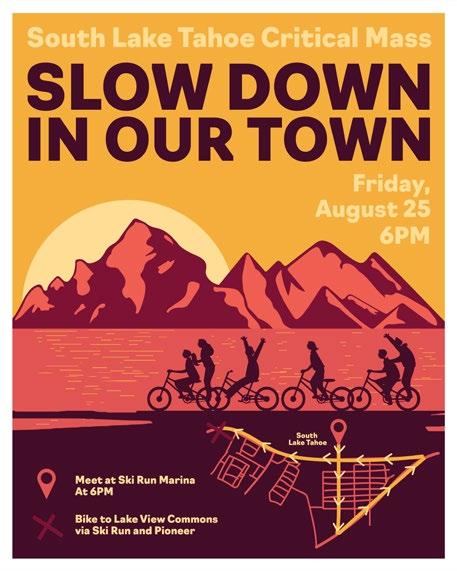
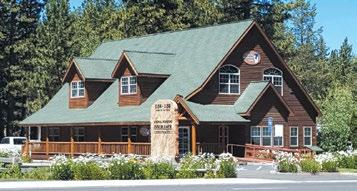

Fun fact: Did you know that no matter where you go in the world, the word “loco” means “crazy”? Though crazy is defined as “mentally deranged,” it also means “extremely enthusiastic.”
Or, as I’ve personally discovered, it’s a term hurled at a person who’s having a wee bit too much fun at inappropriate times, like during sermons, job terminations, arrest for failure to register their car or during their colonoscopy prep.
And while some people struggle for years to suppress their “crazy,” the rest of us just move to Tahoe. Here we blend in and, regardless of whether we want to or not, become full-time members of the loco-local club.

In the past, most crazy behavior was attributed to a plant found freely growing in the western U.S. that caused horses, cattle and cash-strapped cowboys to stagger and act more strangely
than usual. The plant was known as “locoweed,” or in layman’s terms, “I need to get me some o’ that!”
I recently read about this plant for an entire minute, and learned its seeds are “prolific producers . . known to be viable for fifty years or more,” unlike the people who eat them. Another fun fact is, even though it’s still prolific in the western US, it is no longer available for free. However, it’s easily located in a dispensary near you.
Few people realize that Tahoe has its own form of locoweed. It’s called “pine pollen,” and locals have been snorting it (some willingly) for years. This may result in complete brain paralysis, as commonly seen at airports and boat launch ramps. I would like to promise you that at 70 years old, our days of grazing on locoweed are over.
And, at this point in the season, we’re no longer under the influence of pine pollen. But today, we went to the grocery store and I paused at the checkout stand when I saw what we had placed on the conveyer belt. And now I’m not so sure.
The day started off normally enough. Hubby and I woke up, not to an alarm, but to the audible farts of our Labrador, who was warning us that he was filling our bedroom with toxic levels of a suffocating gaseous cloud. Good timing, as the shepherd
protectively guarding my feet all night had lain her 65-pound body across them, and I woke up in time to discover constricted blood flow just short of mandatory amputation.
But near-death experiences are common since we’re in our 70s. I mean, these days we’re taunted by stairs and mocked by ladders. We’re confused over the location of our car keys and our car. And completely thwarted when we attempt to open an aspirin bottle. In fact, the only thing we can easily open is a beer, which fortuitously also works on pain relief and improves attitude.
So, thank you for that, Lagunitas.
Nevertheless, we do our best to avoid early departure from the planet by visiting our doctors regularly. We don’t necessarily do what they advise. But at least we listen attentively while wishing we had ingested
locoweed, so I believe we’re halfway there.
Then, today, our doctor sent us off with a Rx for digestive health and recommended “a diet of assorted fruits with a mix of brightly colored vegetables.” And I needed to purchase some flowers for a hostess gift, so we headed directly to the supermarket to pick up those items. Upon entering, Hubby immediately noticed that the store carried our favorite pain relief product, Lagunitas. And it was on sale. He forgot the Rx and I forgot the flowers. But heeding our doctor’s instructions, we promptly filled our shopping cart with one carton of blueberries and assorted fruit-infused beverages in a bright mix of vegetable-colored Lagunitas cans.
Matilda and I have been busy getting the South Lake Tahoe Critical Mass bicycle event organized. After last month’s column, lots of community members reached out to express enthusiasm for putting together a protest-bike-ride bringing people together to oppose any efforts to raise our town’s speed limits.

Chief among those twowheeled South Lake citizens who have wanted to help put a Critical Mass event together are the members of Lake Tahoe Bicycle Coalition. Matilda and I recently spoke with Nick Speal, current president and longtime board member. Nick, Matilda, and I discussed various strategies for making the ride a success.
“One concern I have is that Highway 50 is a pretty challenging road, to say the least,” Nick said.

“When I’ve done Critical Mass rides in the past, there were just so many cyclists that the cars didn’t have an option, they had to slow down to our speed,” I responded.
“But what about kids and families?” Matilda asked. “That’s exactly the point,” Nick said. “I think for a lot of people locally it might be their first Critical Mass. We want to ease into this and not intimidate people. Starting at Ski Run is a good way to do that.”
We ultimately decided that rather than starting at the largest and most dangerous intersection in town, the Y, we will instead start at Ski Run Marina, where the traffic is already moving a bit slower. We also talked about when the sun would set and when people get off work and pick
up their kids. We chose 6pm on August 25 (the last Friday of August) as the meet up time and outlined the route, starting at Ski Run Marina, that would be safer for everyone. Matilda and I also worked on a tentative mission statement for the protest: In an effort to demonstrate broadbased community opposition to raising the speed limit anywhere in South Lake Tahoe, we, the two-wheeled citizens of this great mountain home, plan to congregate en masse and cycle slowly down the main arteries of town on the last Friday of each month. The event will be children- and family-friendly and done in the spirit of civic engagement and education with the ultimate goal of making our community safer for pedestrians and cyclists. That’s right: we’ll do this every month until winter, including costumed right before Halloween.
Matilda and I also were able to speak with Mayor Creegan, who wrote, “I 1000 percent would love to talk to you and Matilda about this event.” It’s hard to argue with that kind of enthusiasm.
Mayor Creegan suggested that we reach out to Dave Stevenson, Chief of Police here in South Lake Tahoe, to make sure
he was aware of what was being proposed and get his input so that we could be as safe as a bunch of traffic-causing-cyclists can be.
“That would definitely make it safer for kids and families,” Matilda agreed.
Mayor Creegan also said that tentatively Caltrans has decided not to raise speed limits.
“Our community spoke with a unified voice against these proposed speed limit increases, and Caltrans heard us. I want to thank everyone who came to the city council meeting, spoke on the item during the public hearing and those who submitted written comments. We all came together to keep our pedestrians, bicyclists, motorists, and wildlife safe. I also want to thank our dedicated city staff who developed a positive relationship with multiple levels of Caltrans management. Communications from the community, city staff and with Caltrans management was key in creating this outcome.”
It is reassuring when the government works as intended and is responsive to the concerns of its citizens. As a former history teacher, I relish the chance to teach my own kiddos about the civic process and whenever possible throw in a smattering of civil disobedience.
“Does that mean we don’t need to protest?” Matilda asked. “What does tentative mean?”

“Tentative means that it’s not official yet and they may do another survey next year and we could be back in this same situation,” I responded. “It’s really great that the community came together and made an impact, but I don’t think the work is over yet. I’d like to see a proper ‘School Zone’ at South Tahoe Middle School.”
“Didn’t Mayor Creegan say that they were working on the middle school zone thing too?”
Matilda asked.
“Yes, but until it happens and you can safely cross Lake Tahoe Boulevard to go to school and the 25mph requirement is posted and enforced, I’d say we should protest.”
“Even after that,” Matilda continued. “It will bring people together for a good cause.”
“Yes, it will.”
MC Behm is a full-time resident of South Lake Tahoe and author of “Once Upon a Quarantine” and “The Elixir of Yosemite.” To learn more or respond to columns visit www.behmbooks.com or email mcbehmbooks@gmail.com.

I am frequently asked what my favorite trail is. Well, first, if I had one favorite trail, do you really think I would tell you where it is? Second, I don’t really have a favorite trail. What I do have is a favorite type of terrain and I will say where that is. I like high, rocky ridge lines and passes . . . with as few people as possible.




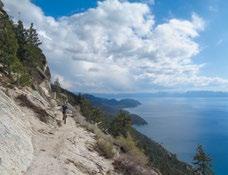
But as long as we are on the subject, I am happy to say that finally the high passes are pretty much clear enough to travel. That isn’t to say there is no snow, but you can get through with only a few patches on some of the highest north-facing trails. Not bad for early August, right? I do also love


coming across those patches of snow up there, you know, just a reminder of how beautiful that was last winter. It’s really the perfect scenario, though, because the trails opened in this kind of slow procession up the mountain, which is the way things would normally open, but this year that procession was much slower and later.
That works out very much to our favor right now because instead of entering our dry sand season, we have all these totally fresh trails
ready to go.
OK then, you get up there, walk and ride over a few snow patches, through a couple little snow melt creeks coming across the trail, time to drop the other side—yippee! Come around the first turn, grab some brake and — screea chee — oh my goodness, everyone knows exactly where you are! Your brakes are howling like a stuck pig.
Often, this noise will stop after a few minutes of pumping the brake lever and a little heat buildup on the brake rotor. What has happened is all that snow and water got on your brake pads and rotors and they don’t like it and will let you know it. We call it contamination and it can make you nuts. If that first few minutes of pumping and heat makes them quiet, then you are golden for the whole
drop. Sometimes, though, the sound doesn’t relent and you have some work to do when you get to the bottom. What does that mean?

Hopefully just some clean up.
First pull the wheel off, then the brake pads from the Caliper—front or rear, it doesn’t make any difference. The brake pads will probably have some sort of safety pin at the top to hold them in place, either a cotter pin or a screw with a small Allen-head or sometimes a flathead screw. Remove the safety pin. Then use a flat head screwdriver (a tire lever works well, too); make sure it is clean as you don’t want to contaminate your brake pads (any worse). Push the screwdriver between the brake pads that are still in the brake caliper, then give a gentle and slow push to spread the pads apart to make extra space between them. This makes it easier to do the next step, which is to pull them out of the caliper together and with the spreader spring that sits between them.
Next take a piece of fine grit sandpaper, say 160 to 220 grit.
Lay it on a flat surface and rub the brake pads one at a time on the sandpaper. The pads probably had

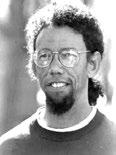
a dark glazed look on the braking surface, and you will be trying to remove this to have a clean, lighter look. Once you have that look, take the two pads, place them face to face and rub them together under running water. Now, being careful not to get your greasy little fingers on the fresh pads, reverse the process, put the spreader spring back between them and reinsert in the caliper: don’t forget the safety pin!
With all that, it could also be that you simply need new pads if you have been doing big descents all summer or maybe last fall and with all that snowblowing and playing, you forgot all about your “clampers.”


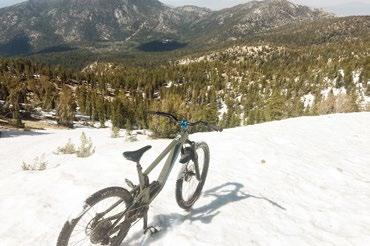
There is one more quick operation that can help your stuck pig matters. While the wheel is off, grab another piece of that fine grit sandpaper, pinch the brake rotor with it and make a few passes around the full circumference right on the braking surface. This will help break up any glazing on the business part of the rotor. Splash a bit of clean water to remove any debris and keep those grody pinkies off that rotor.
Again though, if you see any gouging or if the rotor has a bluish tint to it, this is a sign that you may be a brake draggin’ chicken, and it’s time to replace that rotor.

Put the wheel back on. It will be important to give the brake lever several pumps to reset the pads before riding since you had pushed them wide open earlier in this operation. Alright, go give ‘em a test, just not on my favorite trail!
Let’s play!
Time for Indiana Jones to hang up the hat



Indiana Jones has been one of our most iconic film characters since the ‘80s. After the third film in 1989, he was resurrected in 2008 and then again just this year —five movies spanning 40 years.
I still consider the first film, Raiders of the Lost Ark (1981), the best of the bunch. It was created by George Lucas and Steven Spielberg and directed by Spielberg when both were at the top of
their game. The script was tight, the characters perfectly drawn, and Spielberg was the master at tapping into our love of adventure. Instead of CGI , the stunts mostly involved real people (including Harrison Ford), the vehicle chases were real vehicles, all which draws you into the action better. The other thing that makes the first film work is that the time period and locations are perfect for exotic adventure. The setting in the ‘30s was a nostalgic time and place, just right for an adventure story.
The second film, Temple of Doom (1984) attempted to recapture the magic of the first film but missed the mark dreadfully. The characters and situations were more two-dimensional, the dialogue was often hokey, they added an obnoxious kid as a central character, the plot was convoluted and some the stunts and effects were ridiculous, such as the famous raft out of the airplane sequence, which sums up how this film was trying too hard.
Luckily Spielberg got his act back together with the third film, The Last Crusade (1989). They added a cool backstory opening scene where a teenage Indiana shows us some of the characteristics that would later define him as he races to get a relic to his father. This sets up the rest of the film as Indy’s father is now a central character and played by none other than Sean Connery. A solid script full of political intrigue as well as a classic treasure hunt—for the holy grail, no less—re-captured the Indiana Jones magic. It also had a lot more real people (including Ford) doing real stunts, which added to the overall impact.
Nearly 20 years later, in 2008, Spielberg and Lucas decided they were not yet done and created The Crystal Skull. Wanting to keep with the Harrison Ford timeline, he had aged 20 years, so the film moved into the 1950s. This began to get a little problematic as the adventure story was now set in a more modern world. They were now in the age of the Cold War, atomic bombs and science fiction, which, though nostalgic in their own right, do not lend themselves

well to the kind of Indiana Jones adventure we like. This film also missed the mark by trying to include all the 1950s’ motifs within the classic Indy adventure as they jumped the shark with both the nuclear blast, which Indy survived by hiding in a lead-lined refrigerator, and finishing with aliens. Indiana Jones and aliens, they just don’t mix. Add in a rather unlikeable long-lost son and way too much CGI and the whole film was almost as bad as Temple of Doom
The most recent attempt at capturing a good Indiana Jones adventure is this year’s Dial of Destiny This will most probably be the last true Indiana Jones adventure since Harrison Ford is now 80. Ford himself wanted to do one last film as he thought that The Crystal Skull didn’t really finish Indiana’s story.
I have to say that even though Spielberg didn’t direct (it was taken on by James Mangold) and Spielberg and Lucas had only producer duties, this film comes the closest to the first and third films in terms of being a good Indiana Jones adventure. Mangold said that the first film was always his favorite and he tried to put as much of that style in this one. And that is exactly what it is.
The film starts with a flashback sequence from the ‘30s with a CGI Indiana Jones to make current Harrison Ford look like his 35-year-old self. The scary thing is that it works pretty well. They used many shots where you don’t have to see his face and when you do, it’s close to the original. Of course, his voice is still older, but by and large it works. They got rid
of the unlikeable son and replaced him with Jones� archaeologist goddaughter who is a bit of an Indiana Jones herself (possible spin-off?).




Next, even though the film is set in 1969, it steers away from the time period. As soon as possible, the film jumps to Tangier and Greece, areas where equipment and vehicles are a little behind the times, creating an atmosphere that looks more like a classic adventure from the ‘30s. They even find a way to bring in Nazis as bad guys. Yeah, they’re modern, but they all subscribe to the old school Nazi ways and uniforms. The film also uses more real stunts (which, unfortunately, 80-year-old Ford is no longer a part of, though he can still throw a good punch and swing his whip around like he means it).
The film is full of Indiana Jones Easter eggs and the plot involves once again looking for an artifact, though the supernatural aspect is more science than supernatural, and you have to accept that Archimedes could have built a time travel device.
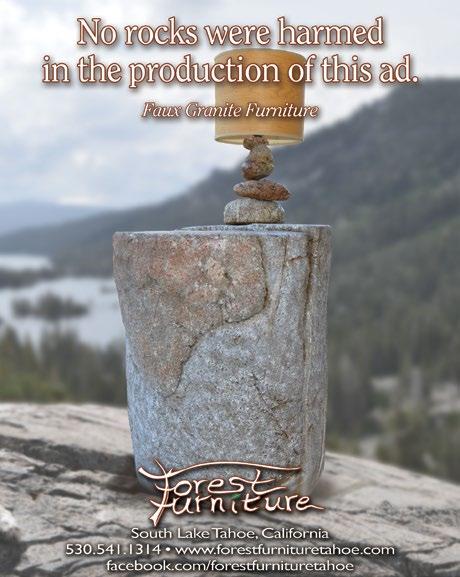
Yeah, that is the weak element in Dial of Destiny leading to a rather over-the-top finale. But overall, it is not a bad ending for Indy and his adventures, especially given how bad Crystal Skull was. And it was nice to see the guy in the hat one last time before the character fades from successive generations.
Oh, and Teresa really liked the first and third and then lost interest, so I don’t have her take on the last one.


